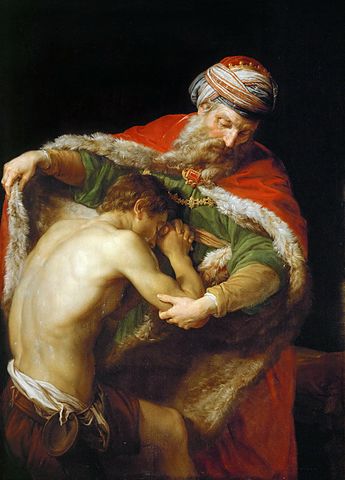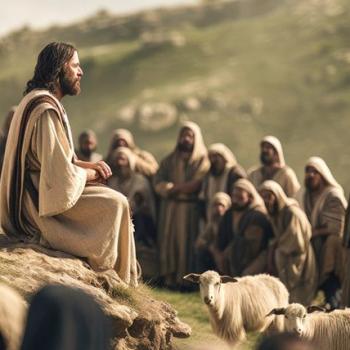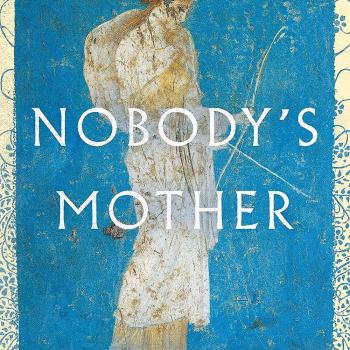Some people might take issue with my critique of C2C in the last post.

Am I saying C2C is somehow bad? No.
That would be too sweeping a comment. A good friend emailed me after my last post. He suggested that some people might misunderstand my meaning. This post is an unplanned interjection to the series. I think it would help to make some clarifications before going on.
I will clarify myself by responding to a few possible objections to my critique.
Possible Objection #1
“You are criticizing C2C for not doing something it was never designed to do. It is a tool for evangelizing animists, not for developing biblical theology or being a framework for biblical interpretation.”
My response:
I completely acknowledge its intention as an evangelism tool. I highlight C2C because it seems to me that it functionally acts as a framework through which its oral learners will then interpret the Bible.
I don’t see kind of tools much of anything in existence that does exactly what I’m calling for. C2C simply is one of the closest existing tools to what I hope will soon exist––a more balanced presentation of the grand narrative.
It is a helpful exercise for us to consider what current models functionally are framing the way people understand the grand narrative of Scripture, even if it is not a tool’s intended purpose.
Possible Objection #2
“How can you say C2C is shaped by systematic theology rather than biblical theology? It clearly follows the Creation-Fall-Redemption model of biblical theology more so than it does systematic theology. Therefore, how can you say it inhibits biblical interpretation?”
My response regarding systematic theology vs. biblical theology
A presentation that is shaped more by systematic theology than by biblical theology when its themes and emphases differ from that of the biblical narrative itself.
The distinction is not between truth and falsehood. The agenda of C2C is determined by the questions of systematic theology and is particularly focused on evangelism. This is most evident in how it proportions its parts and in the comments that are inserted at various points in the story.
Let me illustrate in two ways.
(1) Proportionality.
Part 8 of C2c is simply an invitation to the listener and a prayer. That’s not part of the story being presented. If you count the Prodigal Son story in Part 7, the Genesis 3 Garden narrative takes up 20% of the entire C2C story. One could very well argue that the prodigal son story is an extension the invitation since it is most certainly has greater prominence in C2C than in Scripture.
 Not counting the Prodigal son parable, the Garden account takes up 25% of the words in the biblical storied told in C2C.
Not counting the Prodigal son parable, the Garden account takes up 25% of the words in the biblical storied told in C2C.
A very dense portion of the presentation centers on the Garden story even though this is only a minor echo elsewhere. The words “major” and “minor” do not mean important or unimportant, but prominent and less prominent. Without question, Gen 3 and Adam are not major themes utilized in the rest of the Bible and especially in gospel presentations
By contrast, consider the resurrection in C2C. The narrative itself only mentions the resurrection in one sentence. The follow up analysis makes nothing of it. The other two mentions are simply thrown in. They are virtually cut and pasted since the context is the explanation and presentation of the sinner’s prayer. The resurrection is the centerpiece of the gospel and the climax of the biblical story. It is stated briefly as fact without any explication of significance.
(2) C2C’s use of terms.
A similar example is the description of God as “righteous.” In both Parts 3–4, the idea is repeated, “God is righteous and holy/just. He must punish sin.” First of all, God’s righteousness is overwhelming presented in positive terms. This particular use of “righteousness” as a descriptor of God may be true in terms of systematic theology, but is grossly misrepresents the way the Bible presents God’s righteousness (i.e. in terms of biblical theology).
Some people might object that this sounds too “New Perspective.” Yet, even Mark Seifrid, who is no fan of the New Perspective, estimates that “references to God’s saving righteousness appear[s] roughly four times as frequently as those to his retributive justice” (Christ, Our Righteousness, 44).
The very fact that the sentence is virtually reiterated back-to-back like it is a result of a systematic, soteriological framework placed on the narrative as it stands on its own.
My response regarding C2C’s influence on biblical interpretation.
It does not set people up to have a balanced biblical theology, thus it inhibits biblical interpretation. I am focusing particularly on what is needed to interpret the entire Bible according to its own context. This means having a very balanced biblical theology/narrative that emphasizes biblical themes in near proportion to that of the Bible itself. Thus, the themes of kingship, “covenant,” monotheism, etc. will be among the big ones.
I understand why it largely omits Israel (as an evangelistic presentation), but that is exactly my point in the previous post. No biblical theology could ever call omit Israel nor even make it a minor facet.
An evangelistic presentation may not necessarily be the same thing as a retelling of the grand biblical narrative. At its best, it would come close. The gospel implies a massive theological context that must not only be told, but be told in such a way that people can use that narrative as the context in which to understand sub-stories, themes, doctrines, etc.
I can summarize in this way:
- C2C is a systematic, soteriological retelling of the biblical story that omits the largest themes in the Bible as it presents itself. Israel is the biggest hole.
- Precisely because it is a soteriological presentation, it is too narrow to be a sufficient framework for biblical theology and thus makes it more difficult for people to accurately interpret the Bible. One’s reading is already limited by the narrowness of the framework being used.
Photo Credit: Kunsthistorisches Museum (via Wikipedia)












